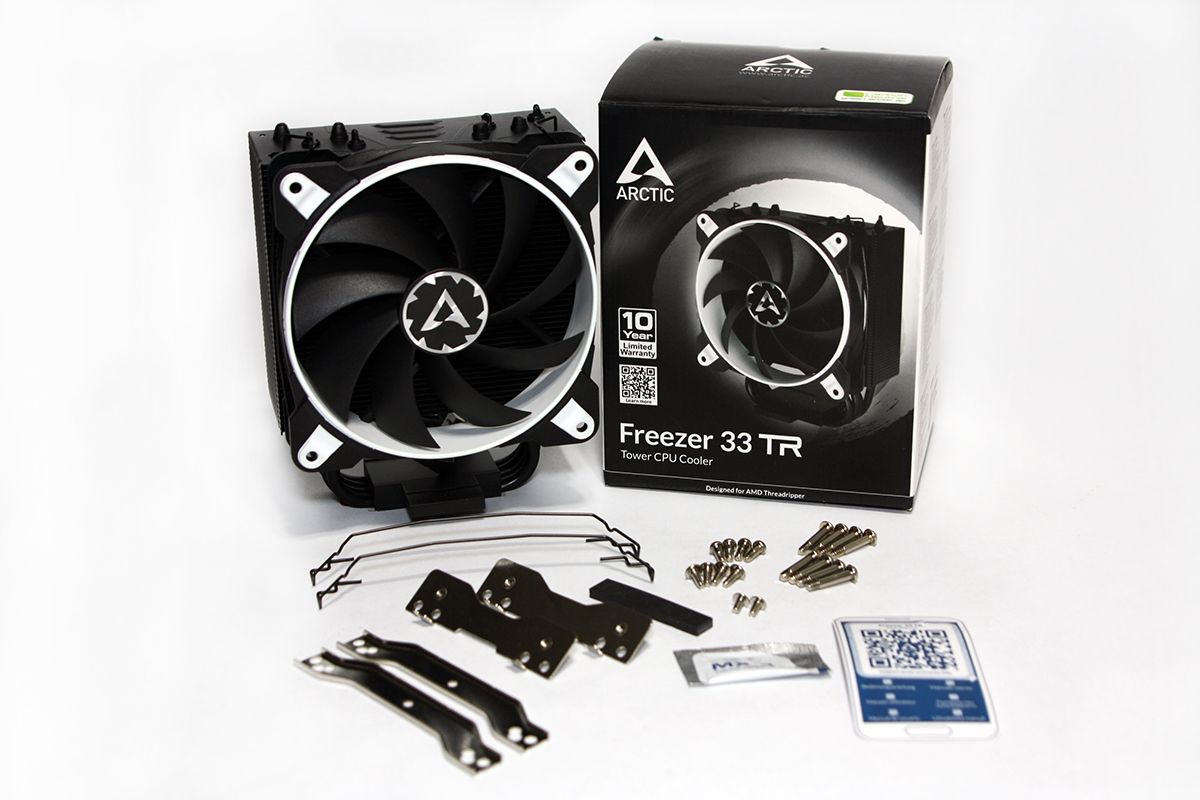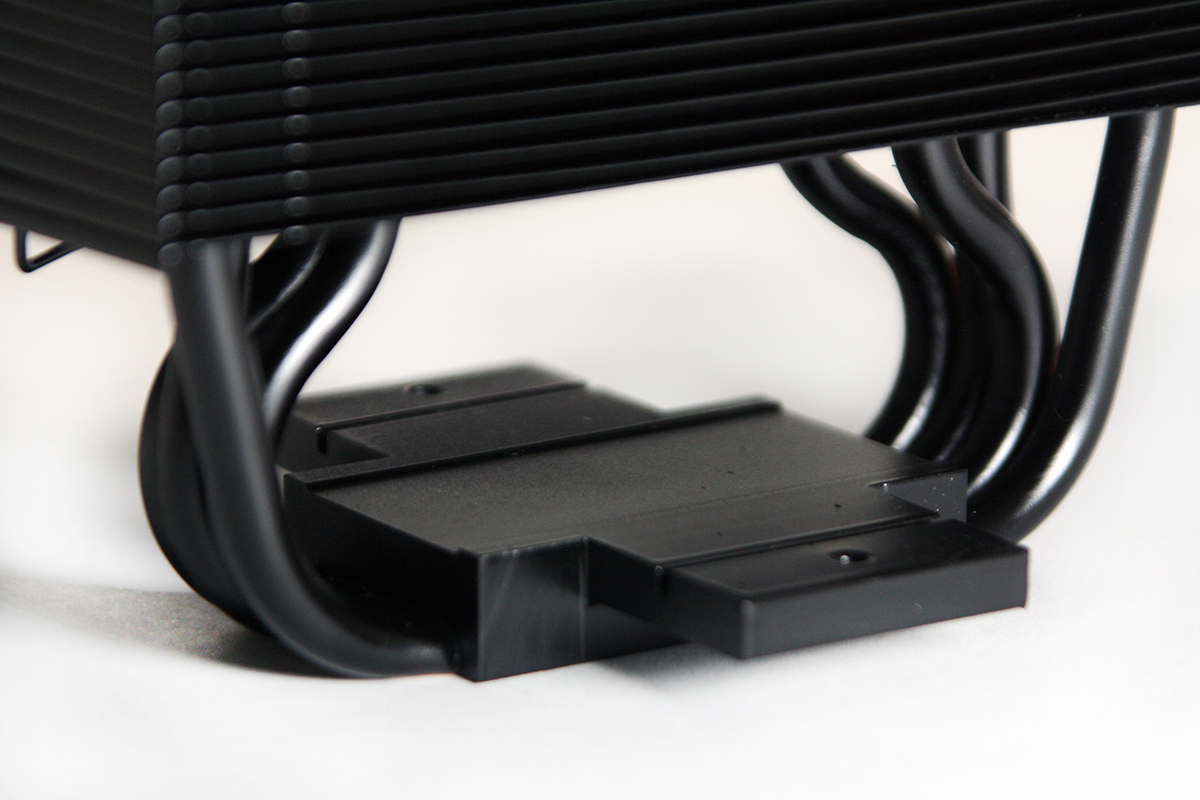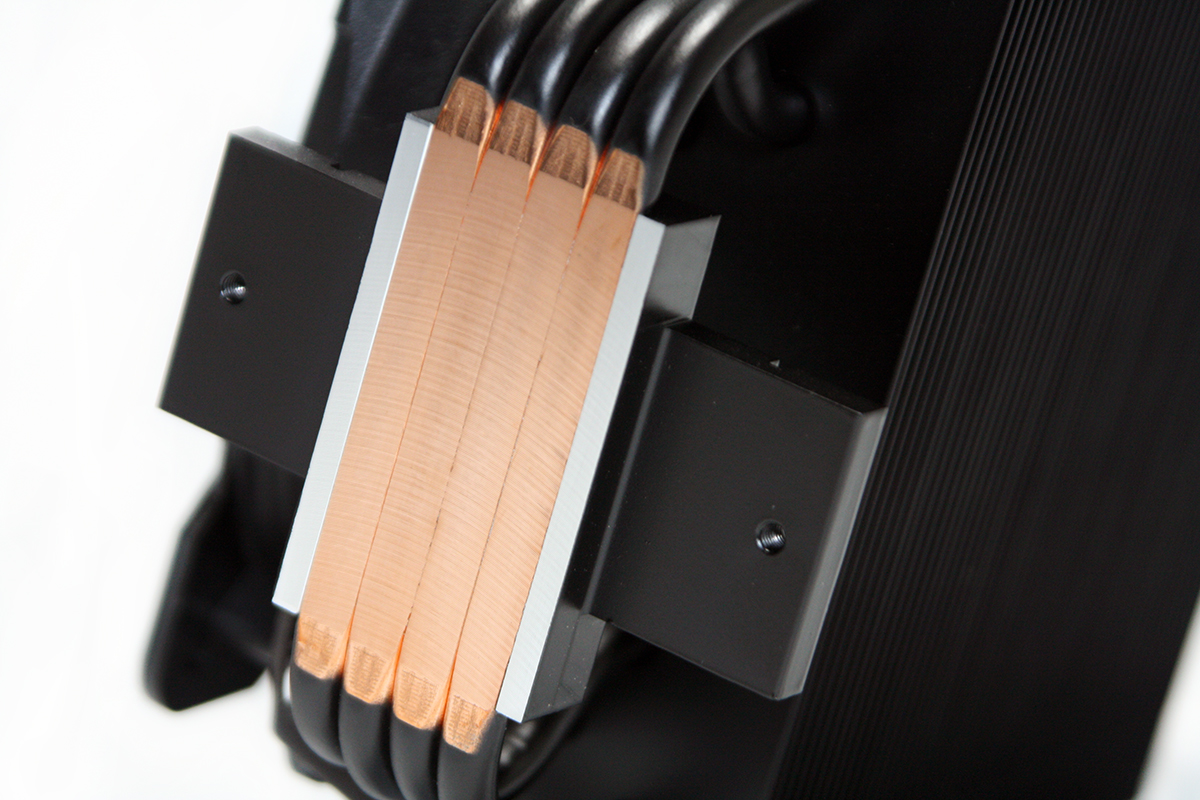Early Verdict
Arctic's striking $39 aircooler has fine build quality and surprisingly quiet performance, and it can cover the bulk of the TR4-socket AMD Threadripper. (That said, if TR4 support doesn't matter, the Freezer 33 eSports Edition is just a few dollars more and covers almost all current CPU sockets.)
Pros
- +
Price
- +
Stylish, good-looking design
Cons
- -
Sustained thermal load temperatures
- -
Does not support most common CPU sockets
Why you can trust Tom's Hardware
Features & Specifications
A staple denizen on the PC-cooling and thermal-solution landscape for many years, Arctic has produced countless new products in the form of system fans, CPU coolers, and syringes full of thermal compound to be used by the PC DIY masses the world ‘round. The Freezer 33 TR represents a sporty segment of the Arctic Freezer CPU cooler line for PC-gaming- and performance-minded users, aimed directly at a cooling market willing to pay for striking looks and purpose-built quality.
The Freezer 33 TR is a quad-heatpipe, medium-size tower cooler with aluminum fins. It comes coated in a black satin finish that Arctic claims to provide better thermal transfer over all cooling surfaces. A single fan (a 120x25mm BioniX F120), highlighted with brightly hued, rubberized fan mounts and blade duct, accompanies the cooling tower to provide motivation for the ambient air. Included mounting hardware is minimal; the only supported sockets are Intel 2066 and 2011-v3, and TR4, SP3, and AM4 for AMD, meaning Arctic is looking squarely at high-end desktop/workstation CPUs, and nothing else.
The fan mounts to the cooler via a pair of "swinging" snap braces that attach to both shoulders of the cooling tower and affix the fan in a front-mounted push configuration. A second pair of snap mounts is available if you wish to add another fan down the line to run a push/pull dual-fan configuration. The fan cabling is a braided-mesh sheathing and runs the entire length from the fan housing down to the four-pin PWM header. The sides of each of the aluminum tower fins are folded and interlocked over one another to create a thermal airflow duct through the Freezer 33 TR. It would seem to indicate an airflow "tunneling" path, to prevent moving air from escaping out the sides of the structure.
Like most other tower coolers in this class, Arctic uses four copper heatpipes (6mm in diameter) that run parallel at the cooler base and vertically up the sides of the tower fins. The base block (presumably aluminum) mates with the heatpipes and provides the leverage and stability once the cooler is installed.
Since the Freezer 33 TR is a direct-contact heatpipe solution, the base block and the heatpipes are milled for better thermal contact with the CPU heat spreader. Mounting plates are secured directly to wings protruding from the base block with screws, which helps with cooler installation alignment and simplicity. If you’re noticing that the milled patch of the Freezer 33 TR’s direct-contact heatpipes seems a bit longer than usual, you’d be correct. That indicates Arctic purposely designed this cooler to span the lengthier Threadripper CPU socket.
Like most quad-heatpipe tower coolers, the Freezer 33 TR sits centered atop the CPU. The only offset is that of the cooling fan, depending on which side it is mounted. The tower is installed and secured before attaching the cooling fan with the snap-mount brackets, and it has plenty of clearance for most memory DIMM heatsinks, save for those with very tall solutions.
MORE: Best CPU Cooling
Get Tom's Hardware's best news and in-depth reviews, straight to your inbox.
MORE: How To Choose A CPU Cooler
MORE: All Cooling Content
- 1
- 2
Current page: Features & Specifications
Next Page Comparison Coolers, Testing Results & Conclusion
Garrett Carver is a contributor for Tom’s Hardware, primarily covering thermal compound comparisons and CPU cooling reviews; both air and liquid, including multiple variations of each.
-
derekullo If the cooler fails at cooling then nothing else matters ...Reply
Being quiet has no bearing if the cpu is thermally throttling or even dying.
Unless there was something wrong with the cooler being tested, this also has no chance of cooling any of the Threadrippers with a 40 watt higher tdp
I'm curious how this would fair on a chip with a lower tdp, like an 8700k.
https://www.amd.com/en/products/cpu/amd-ryzen-threadripper-1900x#product-specs
https://ark.intel.com/products/82931/Intel-Core-i7-5930K-Processor-15M-Cache-up-to-3_70-GHz
https://ark.intel.com/products/126684/Intel-Core-i7-8700K-Processor-12M-Cache-up-to-4_70-GHz
Comparing the i7-5930k to the i7-8700k does show some remarkable progress, even if it was prodded by AMD.
Both 6 core, 12 thread i7s, but with the new one turbo'ing 1 gigahert higher than the old one and using 45 less watts to do so.
Suddenly my i7-4930k feels inadequate, also a 6 core 12 thread. lol. -
zodiacfml Considering the TR CPU lid is really large, it allows for maximum cooling potential of the heatsink. This heatsink easily shows its limits. It looks like a CM 212 Evo.Reply -
FD2Raptor So somehow some design changes to support Threadripper and one less fan can result in ~44 degrees difference?Reply
http://www.tomshardware.com/reviews/arctic-freezer-33-esports-edition-cpu-cooler,5422.html
I'd say this result is more likely from manufacturing defect. -
80-watt Hamster Reply20795268 said:Compared to 3 coolers I've never heard about....why?
The LEPA caught me out as well, but Tom's has been using the CM and FSP coolers as comparison points for awhile now. -
rubix_1011 The coolers used for comparison were chosen due to similar size, design and price point.Reply -
wurkfur Here's a novel idea. Test it on the Threadripper it was designed to be placed on. The Intel compatibility was an afterthought. They didn't widen the baseplate for Intel.Reply -
rubix_1011 The cooler is compatible with Intel sockets 2011v3 and 2066, meaning it supported our standard CPU cooler testing system, which is what we use for all standardized testing. However, most CPU coolers also have AMD AM4 or Intel 115x support but we do not test on those platforms, even though coolers do support them.Reply
Yes, it was designed to also fit Threadripper and we do now have a TR4 system for dedicated TR4 cooler tests, but this cooler was shipped to us for testing a few months ago prior to having the AMD TR4 build.
The base of this cooler also does not fully cover Threadripper, either. It is designed by Arctic to only cover the IHS above the CPU cores below. They illustrate this in one of their images for clarity. (see about 1/3 down the page under "Maximum Performance for Highest-End CPUs")
https://www.arctic.ac/us_en/freezer-33-tr.html -
ryandsouza Can you guys fix the review links for the other coolers? They're pointing to this review itself.Reply
That's a good looking cooler, but useless with this kinda performance. I hope it's an issue with the review unit. -
rubix_1011 You are correct and I sent this on to editing. However, I am thinking that since these reviews aren't officially published yet, the links don't yet exist. I only know this because I also reviewed the other coolers in the comparison. :)Reply




